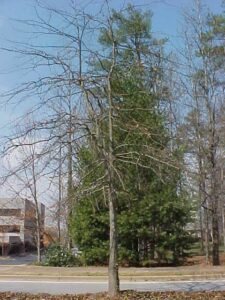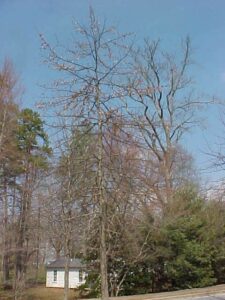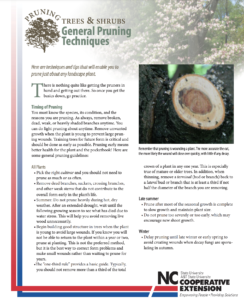Pruning for a Single Leader
go.ncsu.edu/readext?780522
en Español / em Português
El inglés es el idioma de control de esta página. En la medida en que haya algún conflicto entre la traducción al inglés y la traducción, el inglés prevalece.
Al hacer clic en el enlace de traducción se activa un servicio de traducción gratuito para convertir la página al español. Al igual que con cualquier traducción por Internet, la conversión no es sensible al contexto y puede que no traduzca el texto en su significado original. NC State Extension no garantiza la exactitud del texto traducido. Por favor, tenga en cuenta que algunas aplicaciones y/o servicios pueden no funcionar como se espera cuando se traducen.
Português
Inglês é o idioma de controle desta página. Na medida que haja algum conflito entre o texto original em Inglês e a tradução, o Inglês prevalece.
Ao clicar no link de tradução, um serviço gratuito de tradução será ativado para converter a página para o Português. Como em qualquer tradução pela internet, a conversão não é sensivel ao contexto e pode não ocorrer a tradução para o significado orginal. O serviço de Extensão da Carolina do Norte (NC State Extension) não garante a exatidão do texto traduzido. Por favor, observe que algumas funções ou serviços podem não funcionar como esperado após a tradução.
English
English is the controlling language of this page. To the extent there is any conflict between the English text and the translation, English controls.
Clicking on the translation link activates a free translation service to convert the page to Spanish. As with any Internet translation, the conversion is not context-sensitive and may not translate the text to its original meaning. NC State Extension does not guarantee the accuracy of the translated text. Please note that some applications and/or services may not function as expected when translated.
Collapse ▲There are many pruning concepts. One such is ‘Leader Training,’ the concept of training a single stem in a shade tree. An ideal young shade tree specimen should have a single straight trunk from the roots to the very uppermost bud. When the tree is too tall to prune then it is allowed to form the rounded multi-stemmed canopy we are familiar with in mature shade trees.
Trees grow at the branch tips where the apical bud, the leader as it were, suppresses other buds behind it. The apical bud produces auxin, a plant growth regulator. This chemical allows the bud to maintain its position as leader by reducing the growth of its competitors.
Remove the apical bud and the chemical is gone and all of the other buds are released beginning a mad dash try to assume the leader’s former role. This results in bushy growth with one or more branches that are equals. These equal branches compete for resources and space. Eventually, they can create weak spots in the trunk leading to the tree splitting.
The point is to aid a single leader to maintain its position in the canopy of the tree. Tree owners can do this by pruning out any competing leaders up to a certain height. This type of pruning may be done throughout the summer. Use a pole saw (watch out for power lines!) and prune the other branches at least six inches behind the desired leader. A stub of one of the removed branches can be left and the single leader may straightened and taped to this stub with masking tape. The masking tape will last long enough to correct the leader’s growth but will rot soon enough to prevent future damage.
Some trees need more attention than others. Maples are notorious for wanting to form big round canopies at three feet from the ground. Oaks tend to want to form single leaders. Keep a close eye on your young shade trees to maintain single leaders. If you are unsure of how to do this type of pruning consider hiring a professional arborist.
You can learn more about pruning by downloading our Pruning Trees and Shrubs Publication.







